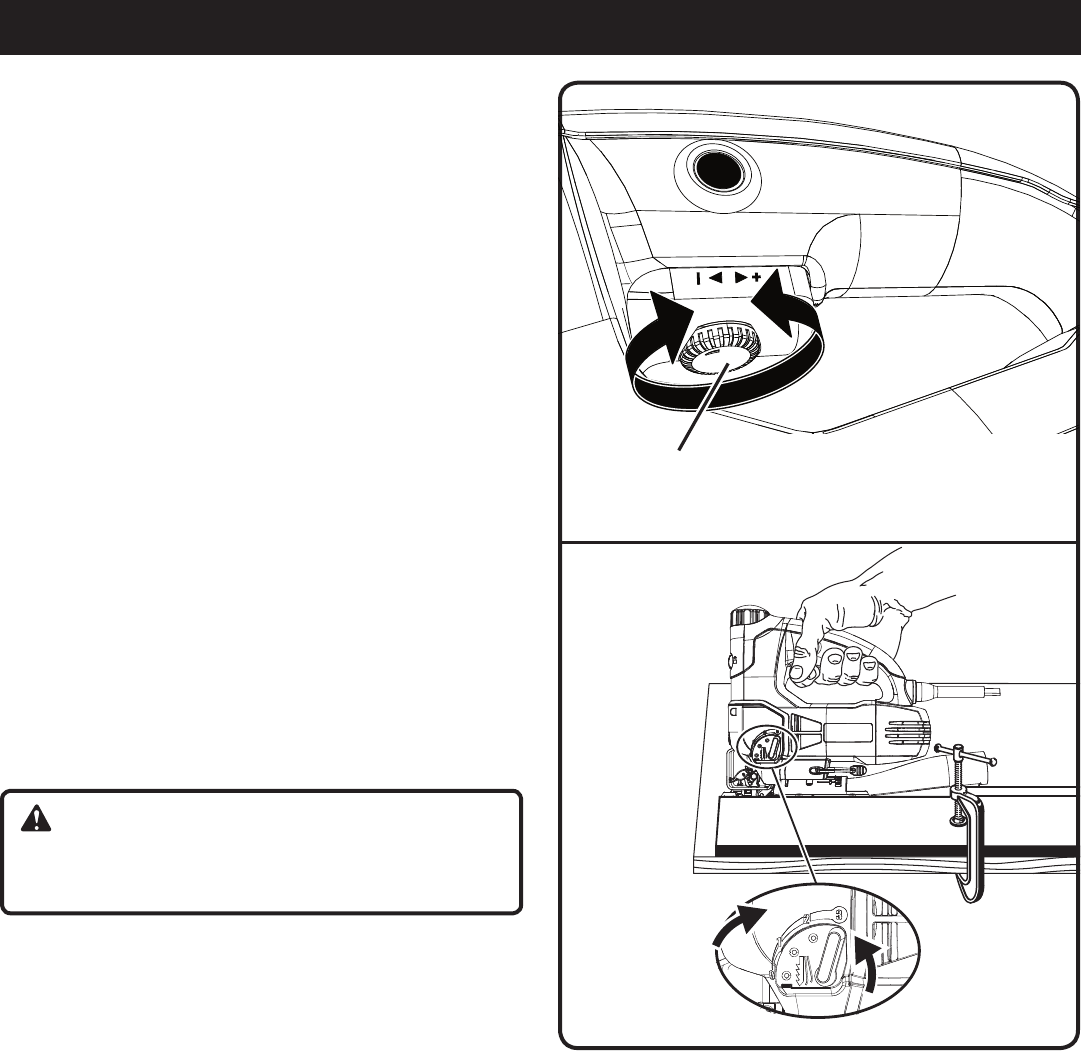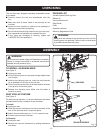
12
VARIABLE SPEED
See Figure 5.
The saw has a variable speed control selector designed to
allow operator control and adjustment of speed and power
limits. The speed and power of your saw can be increased
or decreased by rotating the variable speed control selector
in the direction of the arrows shown in figure 5.
NOTE: Hold the saw in normal operating position and turn
the variable speed control selector to the positive symbol to
increase speed and power. Turn to the negative symbol to
decrease speed and power.
If you desire to lock the switch on at a given speed, depress
the trigger switch, push in and hold the lock-on button, and
release the trigger switch. Next, adjust the variable speed
control selector until the desired speed is reached.
Avoid running your saw at low speeds for extended periods
of time. Running at low speeds under constant usage may
cause your saw to become overheated. If this occurs, cool
your saw by running it without a load and at full speed.
The following guidelines may be used in determining correct
speed for various applications:
LOW speed is ideal when minimum speed and power is
required, for example, starting cuts.
MEDIUM speed is suitable for cutting hard metals, plastics,
and laminates.
HIGH speed produces best results when maximum power is
required, for example, cutting wood. Soft metals such as alu-
minum, brass, and copper may also require high speeds.
WARNING:
Do not insert saw blade into air vents. They could come
in contact with electrically live internal parts, and cause
electrical shock resulting in serious injury.
GENERAL CUTTING
Rest the front of the saw base on the workpiece and align
cutting edge of the blade with the line on your workpiece. Make
sure the power cord is out of your way and not in the line of
cut. Start your saw and move it forward on the work surface.
Apply downward pressure to keep the saw steady and only
enough forward pressure to keep the blade cutting.
DO NOT FORCE THE SAW
Applying too much forward pressure your saw may overheat
the motor and break saw blades.
ORBITAL MOTION
See Figure 6.
The blade of the saw cuts in an orbital motion. This feature
is adjustable and provides faster, more efficient cutting. With
orbital motion the blade cuts through your work in the up-
stroke but does not drag across your work in the downstroke.
The higher settings should be used when fast cutting in soft
material is desired. The lower settings should be used when
cutting materials with more resistance. The “0” setting shuts
off the orbital motion.
VARIABLE SPEED
CONTROL SELECTOR
OPERATION
Fig. 6
TO INCREASE
ORBITAL SETTING
TO DECREASE
ORBITAL SETTING
Fig. 5


















